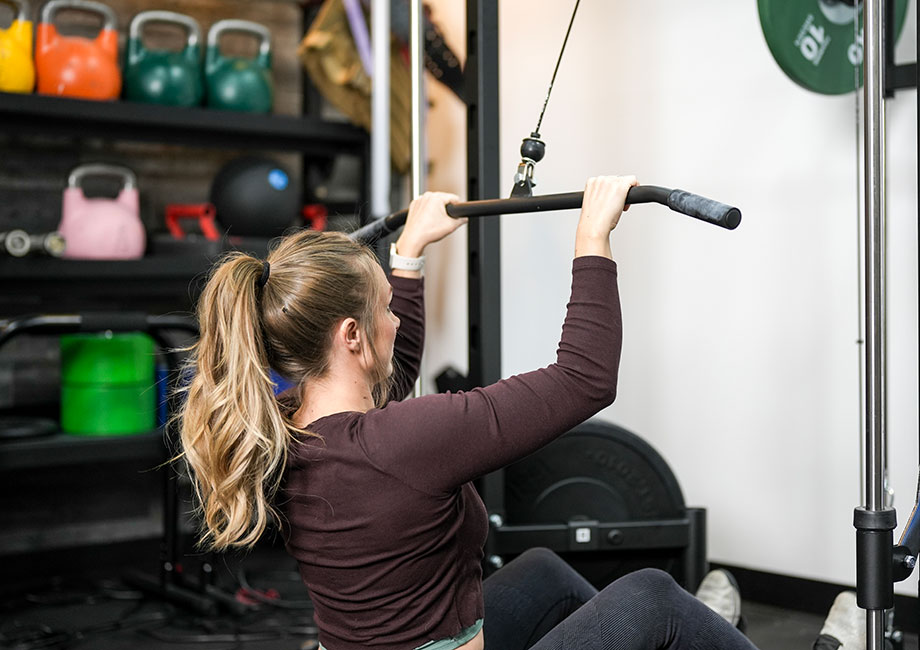We test and review fitness products based on an independent, multi-point methodology. If you use our links to purchase something, we may earn a commission. Read our disclosures.
The lat pulldown exercise is one of the most popular machine exercises to include in your back workout, providing ample muscle activation in the massive latissimus dorsi and other upper back muscle groups. Typically, people perform the lat pulldown with a wide grip, believing this to be best.
Working exclusively with a wide grip is like leaving half of your gains potential on the table because the close-grip pulldown provides similar—if not superior—back muscle activation. It’s the chin-up vs the pull-up—effective in its own right but downright dastardly as a duo.
Caine Wilkes, OLY, USAW-L1, and GGR staff writer, provides pointers on perfecting your form for close-grip lat pulldowns, including common mistakes to avoid, variations to include, and the benefits of using this alternative to the classic wide-grip pulldown exercise.
How to Do the Close-Grip Pulldown
Muscles worked: Latissimus dorsi, trapezius, rhomboids, biceps brachii, brachialis
How to do it:
- Adjust the lat pulldown machine to your specifications.
- Grip the attachment with a close grip and sit down.
- Pull the attachment into your upper chest, nearly touching at the bottom of the movement.
- Squeeze your lats, then release and guide the handle back to the starting position with control.
- Repeat for reps.
RELATED: Best Lat Pulldown Machines
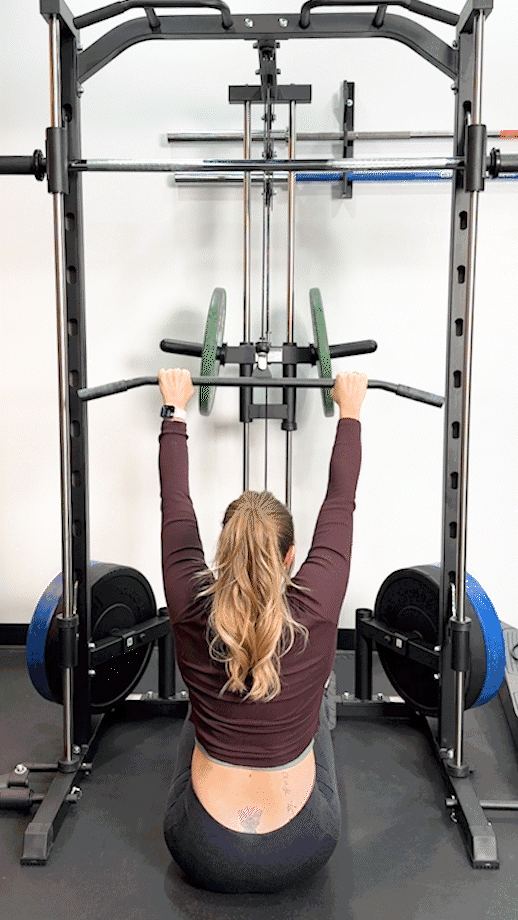
Trainer Tips for Form
The close-grip lat pulldown is as simple and beginner-friendly as machine exercises come. Here are a few more expert tips to really help you hone in on how to do them with proper form.
Get a Grip
The distinguishing feature of the close-grip lat pulldown exercise is, you guessed it, the grip. You’ll want it close obviously, but your exact grip will depend on your choice of attachment.
You have a few options here:
- Straight or short bar: An underhand grip slightly inside shoulder-width
- V-bar: A neutral grip (palms facing each other)
“The straight or short bar attachments are viable for close-grip lat pulldowns because they provide enough space to get a good underhand grip,” says Caine Wilkes, OLY, USAW-L1. “That said, I’m more partial to the V-bar attachment. The hand positioning here provides better activation of the lat muscles and allows the lifter to move more weight, making it better suited for strength training.”
RELATED: Best Grip Strength Exercises
Point Your Elbows
We’re talking specifically about the close-grip lat pulldown, but this one goes for all lat pulldown variations and grips. From start to finish, you want your elbows pointed straight forward towards the weight stack.
“Pointing the elbows ensures you’re engaging the whole length of the lats, not just the upper lats,” says Caine. “Pointing the elbows out to the sides usually winds up recruiting the upper traps and shoulders and, while this isn’t inherently dangerous, it’s not going to activate the muscle groups you’re trying to target, which diminishes your gains.”
Lean Back
Do you dance, pull up your pants, or do the rockaway? Whether you answered yes or no to these questions, you’ll still need to lean back during the lat pulldown exercise.
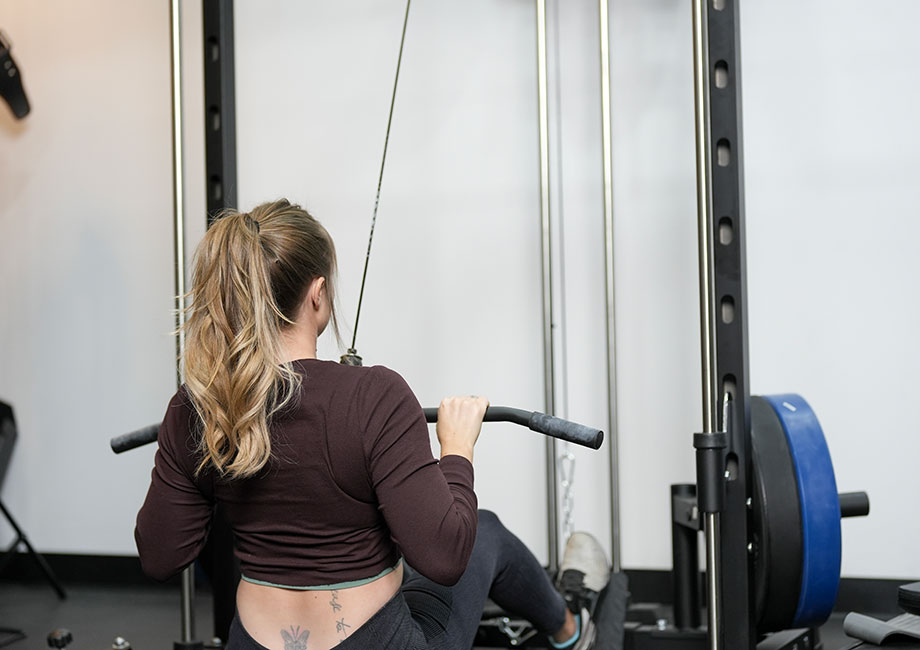
According to the American Council on Exercise1, leaning back at an angle of no more than 30 degrees allows you to incorporate a slight arch in the back, recruiting more of the target muscle groups and resulting in greater power during the lift.
“You want to lean back to get into position, but don’t rock your upper body back and forth on each rep,” says Caine. “The exercise is designed to be strict. Rocking your body back and forth encourages momentum, essentially cheating the rep and reducing the impact of the exercise.”
That’s not all; to get the strongest pull and best activation of your back muscles, you’ll want to bring those shoulder blades down and back, pinching them together.
Close-Grip Pulldown Benefits
So, why exactly is the lat pulldown, close-grip or otherwise, one of the best back exercises?
Excellent Activation of the Back and Biceps
One could surmise that they named the exercise the “lat pulldown” because it heavily targets the lat muscles, but that’s just the tip of the iceberg.
The latissimus dorsi are the primary muscles used to perform the movement; however, a study in the Journal of Strength and Conditioning Research2 observed EMG activity predominantly in the lats, trapezius, biceps brachii, brachialis, but also the rhomboids, levator scapulae, pectoralis major, posterior deltoids, and abdominal muscles, too.
Studies show3 that a medium to narrow grip, such as the one used for the close-grip pulldown, also increases your back muscle activation, making your reps count even more.
Beginner-Friendly
Other than the tendency for newbies to grab that attachment and start throwing their whole body back and forth like they’re rowing a Viking ship—don’t do this, as it may result in injury and probably won’t get you into Valhalla—and this exercise is a simple and easy-to-learn exercise that beginners can master after only a short period of practice.
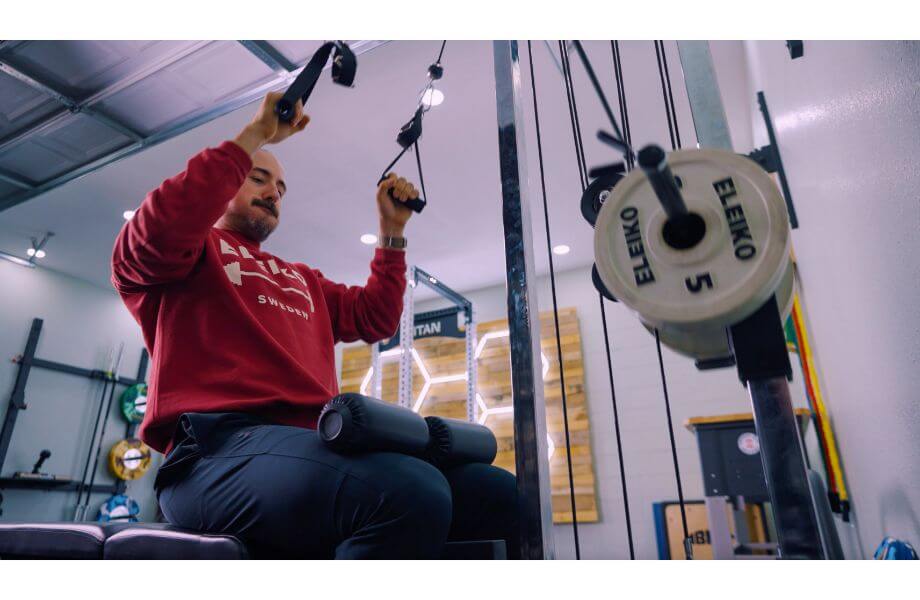
Plus, given the sheer variety of attachments and grips available for the lat pulldown, you can get a lot of mileage out of the one machine and movement pattern.
Less Stress on the Lower Back
According to the World Health Organization4, low back pain affected 619 million people globally in 2020, making it the leading cause of disability worldwide. With that figure only expected to increase over time, it’s never been more crucial to strengthen your back while minimizing shear forces placed on your lumbar spine.
Exercises like the bent-over barbell row and deadlift are back day staples, but holding a heavy bar in front of the body can wreak havoc on the lower back if you don’t have adequate core strength and stability to protect the lumbar. The lat pulldown, on the other hand, is performed safely seated at a cable machine, placing virtually no stress on the lumbar by comparison.
RELATED: Best Cable Machine for Home Gym
So, whether you’re working around nagging back pain or just want to be proactive towards preventing it, exercises like the close-grip pulldown will be a godsend on back day.
Close-Grip Pulldown Mistakes
Fancy yourself a fitness pro? Even the pros can occasionally make mistakes.
Using Momentum
The biggest close-grip pulldown no-no, and pulldowns in general, is using your momentum to move the weight off the stack. Momentum makes the task too easy, reducing your muscles’ time under tension (TUT) and enabling muscle groups from other regions to assist.
“Strict reps require your back muscles to bear the brunt of the workload,” says Caine. “That makes the job much harder, but it guarantees that the muscle activation is where it should be, so you get the gains you’re after.”
Leading With Your Arms
Again, the close-grip pulldown is a back exercise, so you want to use your back to move the weight. Sure, your arms can facilitate the movement because your back doesn’t have hands, but the power should derive from a powerful contraction of the latissimus dorsi muscles.
Focus instead on leading with the shoulders to guide the attachment through its range of motion, bringing the shoulder blades down, back, and together to squeeze the lats at the bottom. Your arms are only so strong, so you must learn to rely on your back muscles to maximize the weight you can move during the lat pulldown.
How to Program the Close-Grip Pulldown
The close-grip pulldown is a welcome addition to any back workout, including full-body workouts and common training splits like back and biceps days.
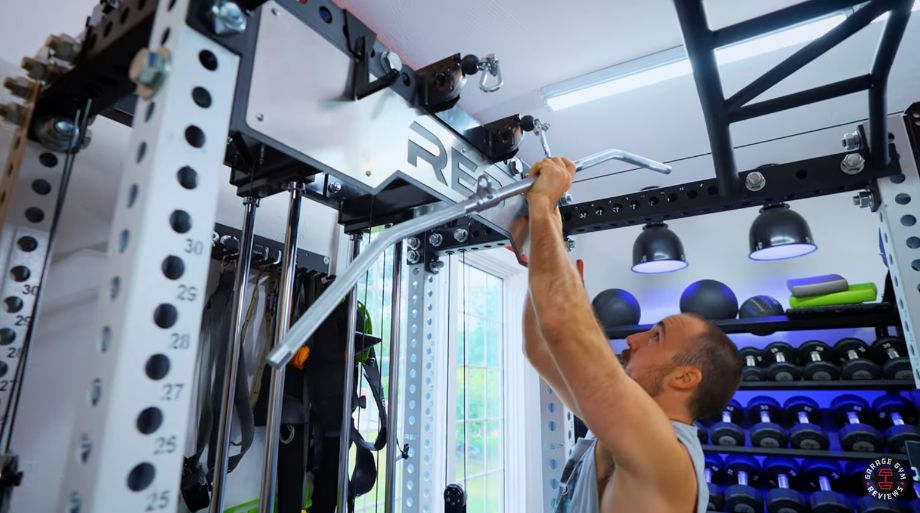
“If I’m doing more of a bodybuilding routine, I like to lead with my barbell exercises like the bent-over row or deadlift on back day,” adds Caine Wilkes, OLY, USAW-L1. “Saving the close-grip pulldown for the middle or end of a workout often works. It makes a great finisher exercise.”
RELATED: Back and Biceps Workout
Be sure to cater your rep scheme to your personal fitness goals:
- For strength: Perform 2-6 sets of 1-5 reps using heavy weight
- For hypertrophy: Perform 3-6 sets of 6-12 reps using moderate weight
- For endurance: Perform 2-3 sets of 12-20 reps using light weight or no weight
Because the close-grip pulldown lets you lock in your thighs under those cushy knee pads, you really get a good opportunity to bear down and move heavy weight. So, while it can be used to build muscular endurance, the pulldown works perfectly to build strength and muscle, making it a great addition to a strength-oriented or bodybuilding workout routine.
If you’re not sure how best to implement the close-grip pulldown in your training, consider working with a certified personal trainer or other qualified fitness professional.
RELATED: How Many Reps To Build Muscle
Who Should Do the Close-Grip Pulldown?
Anyone into strength training can find a good reason to use the close-grip pulldown, and because strength training is generally beneficial to everyone for one reason or another, everyone should be doing the close-grip pulldown exercise.
Professional and amateur athletes, powerlifters, and bodybuilders all may gravitate to this excellent back-building exercise; even casual lifters looking to build their upper and middle back without overtaxing the lower back will love the close-grip pulldown.
Close-Grip Pulldown Variations
The close-grip pulldown makes a valuable addition to your workout routine, but the pulldown exercise is endlessly versatile. Here are a few of our favorite variations.
Single-Arm Pulldown
Why do it: Using dumbbells instead of a barbell is excellent for converting bilateral movements into unilateral exercises. The same principle applies here, as turning your standard bilateral pulldown into a single-arm movement helps you correct muscle imbalances and isolate each side of the back independently.
How to do it:
- Attach a single D-handle to the cable machine’s pulley.
- Adjust the machine to your preferred specs and sit down.
- Get into the standard pulldown position and pull the handle down towards your sternum.
- Pause at the bottom, squeezing the contraction.
- Slowly guide the handle back to the starting position.
- Repeat as needed, then switch sides and repeat the set.
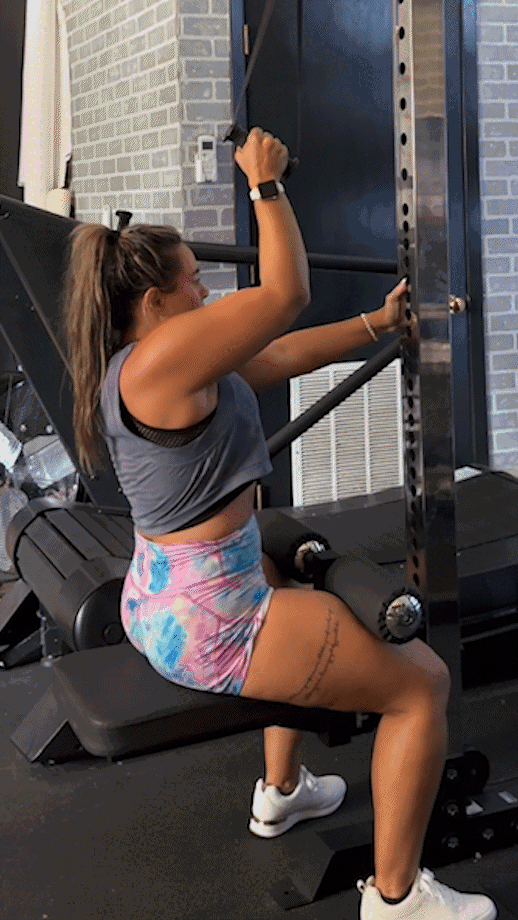
Reverse-Grip Pulldown
Why do it: Trading your classic overhand grip or close grip for a medium supinated grip activates the lats in a different way. The positioning also encourages greater activation of your upper arms.
How to do it:
- Set up as you would for your standard close-grip pulldown using an underhand grip, making sure your hands are shoulder-width or slightly farther apart.
- Sit down, get into position, and pull the attachment with control towards your sternum.
- Pause at the bottom, then slowly guide the attachment back to the starting position.
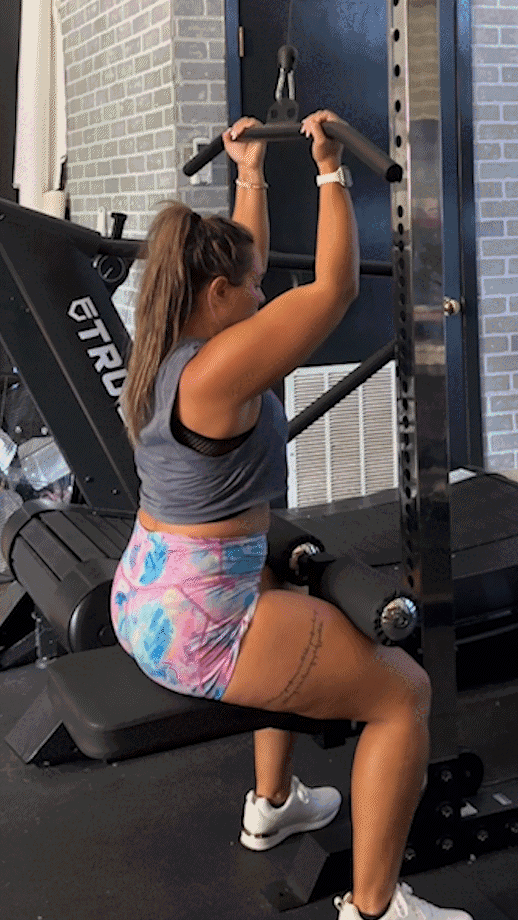
Seal Row
Why do it: Sitting down during the close-grip pulldown reduces the amount of assistance your lower body can provide, but you’ll still be able to get some help from your legs. The unique positioning of the seal row, on the other hand, eliminates lower-body assistance. It’s all back, all day, baby!
How to do it:
- Lie prone on a flat weight bench holding a barbell or two dumbbells below you with your arms fully extended.
- Pull the weight towards your chest using your back muscles.
- Squeeze the contraction at the end of the movement, then slowly lower the weights back down.
- Reset and repeat for reps.
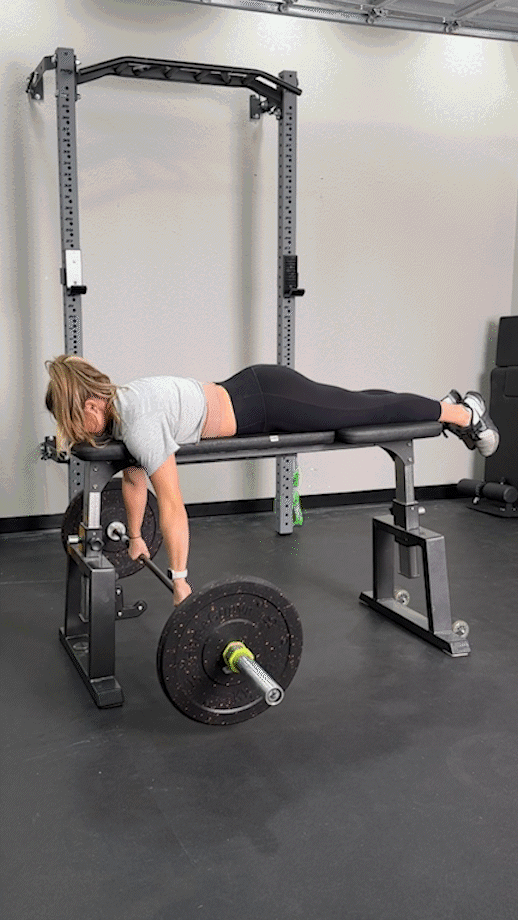
Neutral Pull-Up
Why do it: The close-grip pulldown can be performed with the V-bar using a neutral grip, so the neutral pull-up is the natural progression here. Not only is a neutral pull-up the easiest pull-up variation, it’s also kinder to your wrist joints.
How to do it:
- To perform, you must have a pull-up bar that features a neutral grip option. (The REP Fitness Mounted Multi-Grip Pull-Up Bar is an option we recommend.)
- Grip your pull-up bar using a neutral grip and enter a dead hang.
- Using your back muscles primarily, pull your body to the bar.
- Squeeze the contraction, then slowly lower yourself back down.
- Repeat for reps.
RELATED: Best Pull-Up Bars
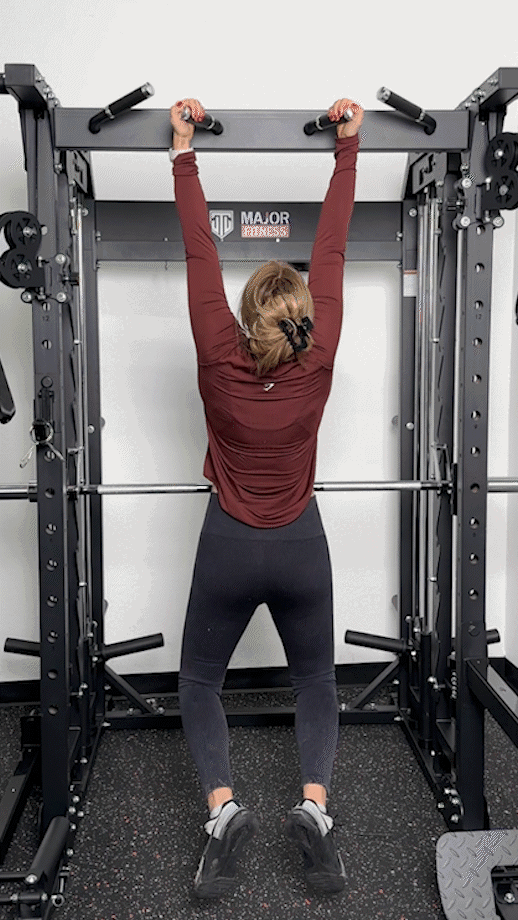
Chin-Up
Why do it: Chin-ups hold some advantages over standard pronated pull-ups, but they’re especially good as a progression from the close-grip pulldown. You’ll get similar activation to the same target muscle groups, except to a greater degree.
How to do it:
- Grab a pull-up bar using an underhand grip and enter a dead hang.
- Pull your chin over the bar, squeezing the lats at the top.
- Slowly lower yourself back down.
- Reset and repeat for reps.
RELATED: Chin-Up Vs. Pull-Up
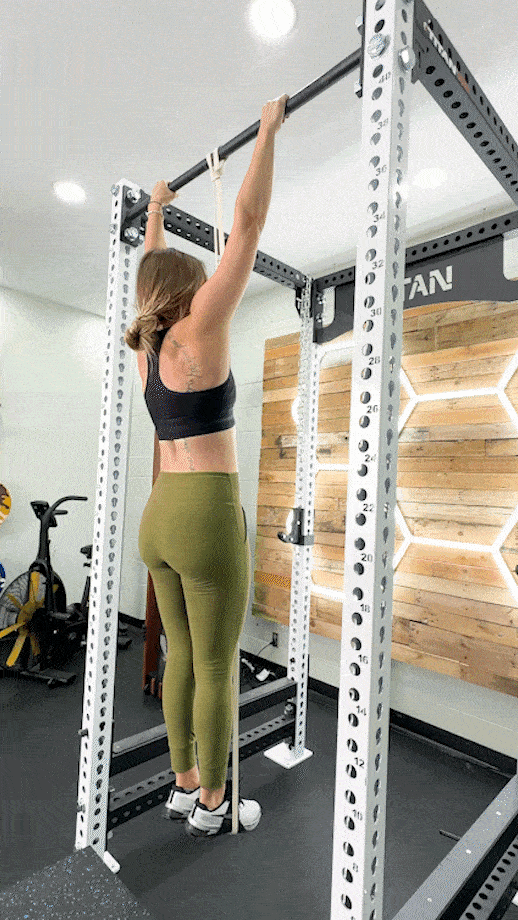
Close-Grip Pulldown: FAQs
What is the difference between a close-grip and wide-grip pulldown?
There’s no trick question here; the main difference is the grip.
Generally speaking, a wider grip makes the movement more challenging because of the movement mechanics. Using a medium or narrow grip, regardless of whether you’re using an overhand or underhand grip, allows you to generate more force and move more weight.
All things considered, the standard wide-grip pulldown and close-grip pulldown should both be regular exercises in your back day arsenal.
Should you lean back when doing lat pulldowns?
Yes. Studies show1 that leaning back at about a 30-degree angle helps maximize muscle activation in the back and allow for a stronger pull.
Should you touch your chest on lat pulldowns?
Ever minding your own business in the gym when a big, bad gym-beast barges in and blasts out heavy reps on the pulldown machine? He’s flinging the bar wildly like it’s nothing, slamming it against his chest like King Kong to show everyone what a dominant force he is.
“Actually, you’re not supposed to touch your chest with the bar during the lat pulldown exercise,” says Caine Wilkes, OLY, USAW-L1, and GGR staff writer. “The proper range of motion concludes a few inches above the chest, so touching at the bottom is actually considered poor biomechanics.”
References
1. Exercise Library: Seated Lat Pulldown. ACE. Accessed January 19, 2024. https://www.acefitness.org/resources/everyone/exercise-library/158/seated-lat-pulldown/.
2. Sperandei S, Barros MA, Silveira-Júnior PC, Oliveira CG. Electromyographic analysis of three different types of lat pull-down. J Strength Cond Res. 2009;23(7):2033-2038. doi:10.1519/JSC.0b013e3181b8d30a
3. Andersen V, Fimland MS, Wiik E, Skoglund A, Saeterbakken AH. Effects of grip width on muscle strength and activation in the lat pull-down. J Strength Cond Res. 2014;28(4):1135-1142. doi:10.1097/JSC.0000000000000232
4. Low Back Pain. World Health Organization. Accessed January 19, 2024. https://www.who.int/news-room/fact-sheets/detail/low-back-pain.
Further reading

Find out how relaxation meets portability in our Sun Home Sauna blanket review. Read more

The lat pulldown exercise is one of the most popular machine exercises to include in your back workout, providing ample muscle activation in the massive latissimus dorsi and other upper back muscle groups. Typically, people perform the lat pulldown with a wide grip, believing this to be best.Working exclusively with a wide grip is like leaving half of your gains potential on the table because the close-grip pulldown provides similar—if not superior—back muscle activation. » Read more about: Close-Grip Pulldown: How a Narrow Grip Can Help Build Wide Lats » Read more

In our HOKA Transport review, we look at the build and versatility of these walking shoes designed for everyday and lifestyle wear. Read more

In this Gorilla Bow review, the Garage Gym Reviews team will tell you why this unique resistance band system could be a great add to your home gym. Read more

